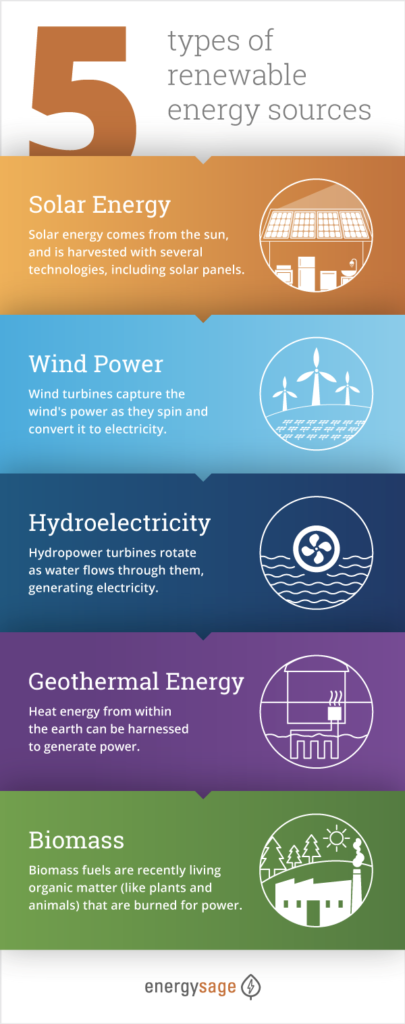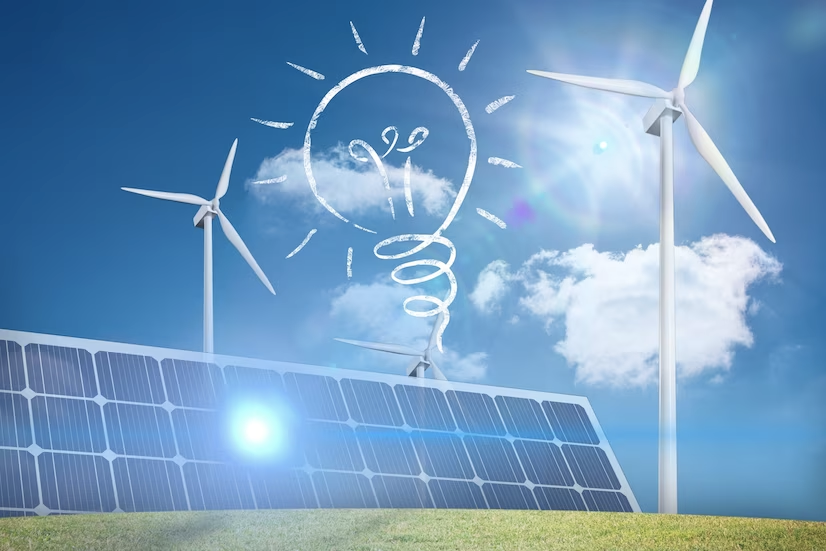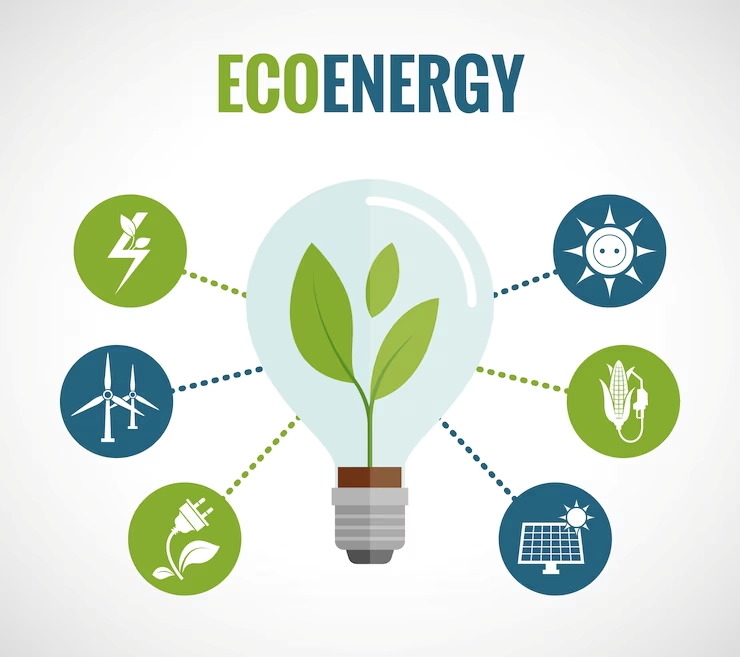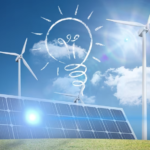|
|
Renewable energy has emerged as a vital solution to the pressing global challenges of climate change and energy security.
By harnessing natural resources like sunlight, wind, water, geothermal heat, and biomass, renewable energy offers a cleaner and more sustainable alternative to traditional fossil fuels.
As the demand for clean energy continues to grow globally, it is important to understand and address the challenges that impede the widespread adoption of renewable energy sources.
In this article, we will explore the major hurdles faced by the renewable energy sector and delve into potential solutions to overcome these obstacles.
Overview of Renewable Energy Sources

source: https://news.energysage.com/five-types-of-renewable-energy-sources/
To grasp the challenges inherent in renewable energy, it is essential to understand the major sources driving the transition.
Solar power is abundant and highly accessible. It harnesses the sun’s energy through photovoltaic panels, converting it into electricity.
The challenge lies in solar power’s intermittency, as it relies on daylight availability and weather conditions. Advances in energy storage systems are crucial to mitigate this issue.
Wind power utilizes wind turbines to generate electricity. It is a mature technology with significant potential.
However, the intermittency of wind patterns and the need for vast areas for wind farms present challenges. Balancing wind power with other energy sources and enhancing grid flexibility is vital for a reliable energy supply.
Hydropower taps into the kinetic energy of flowing or falling water to generate electricity.
While it is a clean and reliable source, its feasibility depends on geographical features and potential environmental impacts. Finding a balance between energy generation and ecosystem preservation is key.
Geothermal energy reaps the Earth’s heat from deep within its core. It provides a constant source of energy but is geographically limited to areas with substantial geothermal resources.
Expanding exploration efforts and developing advanced drilling technologies are essential for its growth.
Biomass energy derives from organic matter, such as agricultural waste, wood pellets, or dedicated energy crops.
Although biomass is a versatile energy source, problems include feedstock availability, land use conflicts, and emissions management.
Major Challenges in Renewable Energy
- Intermittency and Variability: Renewable energy sources are subject to fluctuation due to weather conditions or time of day. This intermittency poses challenges to grid stability and necessitates effective energy storage solutions to store excess energy during peak production for use during low-generation periods.
- Cost and Economics: While renewable energy costs have decreased significantly over the years, initial capital investments remain high. Additionally, the levelized cost of electricity (LCOE) for renewables must be competitive with fossil fuels to encourage broader adoption. Continued advancements in technology and economies of scale are crucial for cost reductions.
- Infrastructure and Grid Integration: The transition to renewable energy requires extensive infrastructure development, including expanding transmission networks to connect remote renewable resources to population centers. Upgrading existing grids to accommodate bidirectional power flow and balancing supply and demand is vital for smooth integration.
- Public Acceptance and Policy Support: Renewable energy projects often face opposition, known as NIMBY (Not In My Backyard) sentiment, due to concerns about visual impacts, noise, or potential environmental consequences. Furthermore, inconsistent government policies and regulatory barriers can hinder renewable energy growth. Ensuring public acceptance and providing stable policy frameworks are essential for overcoming these challenges.
Technological Innovations and Potential Solutions

source: https://www.freepik.com/free-photo/bulb-solar-panel-eolic-fan_926538.htm
- Advancements in Energy Storage: Energy storage technologies play a critical role in addressing intermittent renewable energy generation. Batteries and grid-scale storage systems enable the efficient utilization of excess energy during high-generation periods. Additionally, the use of hydrogen as an energy carrier shows promise for long-duration storage and diverse energy applications.
- Smart Grids and Digitalization: Implementing smart grids enables efficient demand-side management, facilitating load balancing and reducing energy waste. Digitalization improves grid optimization, real-time monitoring, and control, enhancing the integration of renewable energy sources and maximizing their utilization. Smart grids also enable the seamless integration of electric vehicles, further promoting clean energy adoption.
- Research and Development: Continued investment in research and development is vital for overcoming renewable energy challenges. Improving the efficiency and performance of renewable technologies, developing new materials and technologies, and exploring innovative approaches will drive progress in the field. Collaboration between industry, academia, and governments is key to fostering innovation.
- Grid Flexibility and Virtual Power Plants: Grid flexibility refers to the ability to balance supply and demand fluctuations in real time. Virtual power plants (VPPs) integrate multiple renewable energy sources, energy storage systems, and demand response mechanisms. By aggregating these resources, VPPs can optimize energy generation and consumption, enhance grid stability, and provide ancillary services to support the overall grid operation.
- Blockchain Technology: Blockchain technology offers potential solutions for energy sector challenges, including enhancing traceability and transparency in renewable energy transactions, optimizing peer-to-peer energy trading, and enabling more efficient grid management. Smart contracts and decentralized platforms can facilitate secure and automated energy transactions, empowering consumers to participate in the energy market.
- Advanced Monitoring and Predictive Analytics: Deploying advanced monitoring systems and predictive analytics in renewable energy installations can optimize performance, detect faults, and facilitate predictive maintenance. Real-time monitoring of renewable energy assets allows for early detection of issues, enabling prompt actions to prevent system failures and maximize energy generation.
- Artificial Intelligence and Machine Learning: Artificial intelligence (AI) and machine learning (ML) algorithms can optimize renewable energy generation and consumption by analyzing vast amounts of data. AI and ML can enable accurate weather forecasting for renewable energy generation, optimize energy distribution and storage, and improve load forecasting, enhancing grid management and efficiency.
Case Studies and Success Stories

source: https://unsplash.com/photos/eIBTh5DXW9w
Examining countries leading in renewable energy adoption provides valuable insights into overcoming challenges.
For instance, Denmark has successfully integrated wind power into its grid, utilizing flexible electricity markets and interconnections with neighboring countries.
Germany has made significant strides in solar power deployment, driven by favorable policies and incentives.
Costa Rica has made remarkable progress in renewable energy adoption, with over 98% of its electricity generation coming from renewable sources.
Notable projects around the world showcase innovative solutions to renewable energy challenges.
The Hornsdale Power Reserve in Australia, the largest lithium-ion battery installation, has helped stabilize the grid and support renewable energy integration.
The Three Gorges Dam in China demonstrates the potential of hydropower, powering millions of homes while addressing environmental concerns.
Lessons learned from these case studies emphasize the importance of long-term planning, policy support, technological innovation, and collaboration between stakeholders.
Future Outlook and Recommendations
To overcome challenges in renewable energy, several key actions and strategies are necessary:
- Policy and Regulatory Framework Improvements: Governments must establish consistent, long-term policies and regulatory frameworks that provide clear incentives, promote investment, and ensure a level playing field for renewables. This includes streamlining permitting processes and addressing regulatory barriers.
- Continued Investment in Research and Development: Governments, industry leaders, and research institutions should allocate resources to advance renewable energy technologies. This involves improving efficiency, reducing costs, and exploring emerging technologies such as floating solar, offshore wind, and next-generation energy storage.
- Collaborative Efforts and International Cooperation: Cooperation between countries and stakeholders is crucial for addressing global renewable energy challenges. Sharing best practices, knowledge, and resources can accelerate progress and foster innovation. International agreements and initiatives like the Paris Agreement play a vital role in promoting collaboration.
- Public Awareness and Education: Raising public awareness about the importance of renewable energy and dispelling misconceptions are essential for fostering support and acceptance. Education and outreach programs can help inform communities about the benefits and realities of renewable energy, enabling informed decision-making.
- Renewable Energy Market Design: Evolving market designs to value the flexibility, reliability, and environmental benefits of renewable energy is essential. Implementing market mechanisms that incentivize renewable energy integration, provide fair compensation for grid services, and facilitate the trading of renewable energy certificates can create a level playing field and stimulate further investments in renewable energy.
- Circular Economy Approach: Adopting a circular economy approach in the renewable energy sector can maximize resource efficiency and minimize waste. Emphasizing recycling and repurposing of renewable energy components, such as solar panels and wind turbine blades, will reduce environmental impacts and create new opportunities for the industry.
Conclusion
Renewable energy offers a promising pathway to a sustainable future, but it is not without its challenges.
Overcoming issues of intermittency, cost, infrastructure, and public acceptance requires collaborative efforts, technological innovation, and supportive policies.
By investing in research and development, improving energy storage solutions, advancing grid integration technologies, and fostering public awareness, we can navigate the challenges and unlock the full potential of renewable energy.
The path to a sustainable future lies in our collective commitment to addressing these challenges and embracing the transformative power of renewable energy.













No Comments